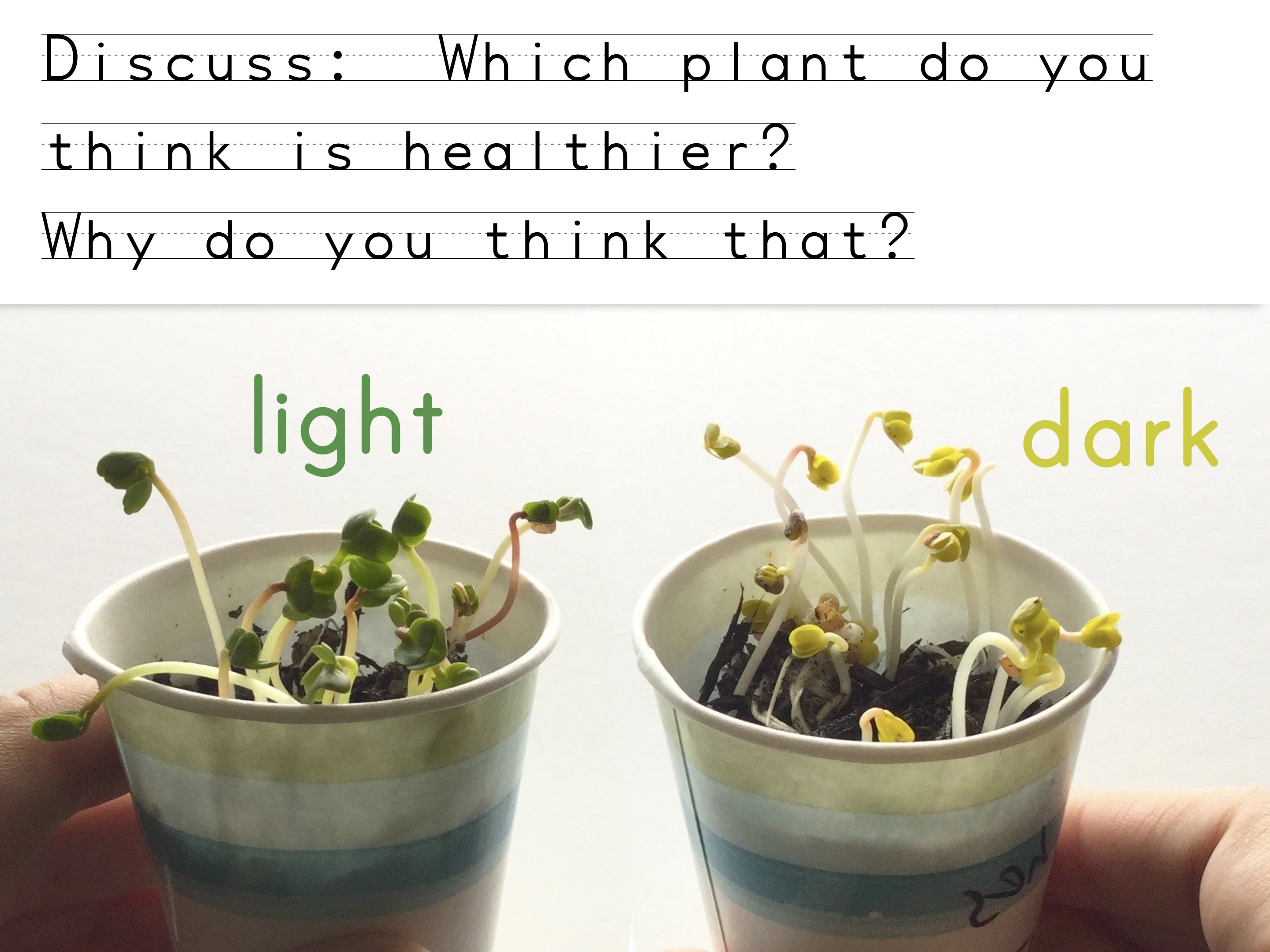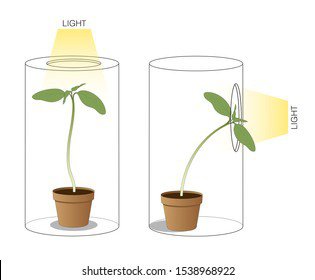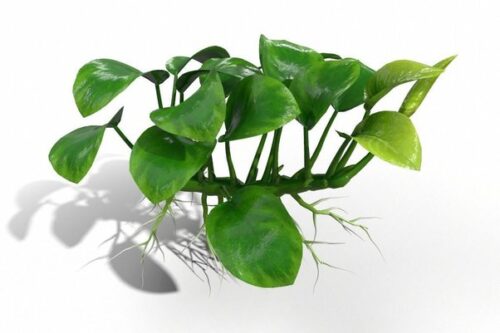Growing a plant in the dark inhibits its ability to undergo photosynthesis, resulting in stunted growth and weakening of the plant. As plants rely on sunlight for energy, the absence of light suppresses their ability to produce food and essential nutrients.
Without exposure to light, plants cannot convert carbon dioxide and water into glucose, which is crucial for their survival. Consequently, plants grown in the dark appear elongated and pale, as they allocate their resources towards reaching for light sources. Furthermore, they may develop frail stems and small, discolored leaves.
Depriving a plant of light hinders its growth and disrupts its natural processes, ultimately leading to its deterioration.

Credit: mysteryscience.com
Effects Of Growing Plants In The Dark
Have you ever wondered what would happen if you grow a plant in complete darkness? Let’s explore the intriguing Effects of Growing Plants in the Dark.
Impact On Photosynthesis
Photosynthesis is disrupted as plants cannot absorb sunlight to create energy.
- Loss of chlorophyll leads to pale and weak stems.
- Reduced oxygen production affects plant respiration.
Changes In Plant Growth
Plant growth is stunted without adequate light exposure.
- Long, spindly stems develop in search of light.
- Limited leaf production hinders nutrient intake.

Credit: www.quora.com
Adaptations And Responses
When plants are grown in the dark, they face numerous challenges as they are deprived of crucial requirements for growth. However, plants are remarkably adaptable organisms and have evolved various mechanisms to respond to this lack of light. In this section, we will explore the behavior of stems and leaves as well as root development in plants growing in the absence of light.
Behavior Of Stems And Leaves
Without light, plants exhibit unique adaptations in their stems and leaves to overcome the dark conditions. Stems of plants grown in the dark tend to elongate and become thinner as they reach towards any available source of light. This response, known as etiolation, allows the plants to maximize their chances of receiving light.
The leaves of plants grown in darkness often show distinct alterations as well. In an effort to capture any available light, leaves become larger and thinner, with reduced chlorophyll content. This adaptive response is known as etiolated leaves.
Etiolated stems and leaves demonstrate the plant’s ability to respond to its environment and prioritize the acquisition of light for photosynthesis.
Root Development
While plants growing in the dark prioritize upward growth towards light, their root development is also affected by the absence of light. In the absence of light, roots tend to become more elongated and exhibit reduced branching. This phenomenon is called positive geotropism.
With limited light available, plants focus their resources on growing longer roots to search for nutrients and water. This adaptation allows them to access resources that might be available in the soil, compensating for the lack of sunlight.
Furthermore, plants in the dark develop reduced root hairs, which are small outgrowths of roots involved in nutrient absorption. This reduction is another response to the limited availability of light and the corresponding decrease in the need for nutrient absorption.
Overall, plants demonstrate fascinating adaptations and responses to growing in dark conditions. By altering their stem and leaf behavior and adjusting root development, they aim to maximize their chances of survival in low-light environments.
Physiological And Molecular Changes
Growing a plant in the dark leads to physiological and molecular changes. Photosynthesis is inhibited, resulting in stunted growth and pale leaves. Without light, plants cannot produce food, affecting their overall health and essential metabolic processes.
Role Of Chlorophyll
When a plant is grown in the dark, several physiological and molecular changes take place. One of the key changes occurs in the role of chlorophyll, the pigment responsible for the green color of plants. In the absence of light, chlorophyll synthesis is reduced, and the existing chlorophyll molecules start to break down. As a result, the green color of the leaves fades, and the plant may appear pale or yellowish. Moreover, without light, plants are unable to carry out photosynthesis, the process by which they convert sunlight into energy. Photosynthesis involves chlorophyll absorbing light and using it to produce glucose and oxygen. Without this vital energy production, the plant becomes weak and unable to grow or thrive.Gene Expression
Another significant change that occurs when a plant is grown in the dark is altered gene expression. Gene expression refers to the activation or deactivation of specific genes in response to environmental conditions. In the absence of light, genes related to photosynthesis, such as those involved in chlorophyll synthesis and the Calvin cycle, are repressed. At the same time, genes related to etiolation, a process that promotes elongation of stems and the production of less functional leaves, are activated. This shift in gene expression enables the plant to adapt to the dark environment. By elongating their stems, plants can reach for light sources, such as gaps in vegetation. Additionally, producing thinner, less functional leaves reduces the plant’s energy requirements and allows for more efficient resource allocation. In conclusion, when a plant is grown in the dark, significant physiological and molecular changes occur. The role of chlorophyll is altered, resulting in faded green leaves and a decrease in photosynthesis. Gene expression is also affected, leading to the activation of genes related to etiolation and the repression of genes involved in photosynthesis. By understanding these changes, we can better appreciate the importance of light for plant growth and development.Comparative Studies
Comparative Studies show that growing a plant in the dark affects its growth significantly. Lack of light can inhibit photosynthesis and stunt the plant’s development, leading to pale and elongated stems. It’s essential to understand the impact of light on plants’ growth for successful cultivation.
< p >When it comes to understanding the effects of growing plants in the dark, comparative studies play a crucial role in shedding light on the differences between light-grown and dark-grown plants.< /p > < h3 >Comparison with Light-grown Plants< /h3 > < p >Light-grown plants undergo photosynthesis, whereas dark-grown plants rely on stored nutrients for growth. < h3 >Effects on Nutrient Absorption< /h3 > < p >Dark-grown plants may exhibit decreased nutrient absorption compared to light-grown plants.Potential Applications And Implications
Understanding the potential applications and implications of growing a plant in the dark can shed light on new possibilities for agriculture, research, and innovation. By exploring the responses of plants to these unique conditions and delving into dark growth techniques, we can uncover valuable insights that may have wide-ranging applications in various fields.
Understanding Plant Responses
When plants are grown in the dark, they undergo distinct physiological and morphological changes as a response to a lack of light. Understanding these plant responses can provide valuable knowledge for optimizing growth conditions, creating resilient crop varieties, and studying the fundamental mechanisms of plant biology.
Exploring Dark Growth Techniques
Exploring dark growth techniques involves manipulating light exposure or applying specific treatments to mimic the effects of darkness on plant development. This research area presents an opportunity to develop innovative methods for cultivating plants in controlled environments, potentially leading to advancements in indoor farming, space agriculture, and biotechnological applications.

Credit: www.quora.com
Frequently Asked Questions Of What Happens If You Grow A Plant In The Dark?
How Long Can Plants Survive In Dark?
Plants can survive in the dark for varying lengths of time, depending on the species. While some plants can tolerate low light conditions for weeks or months, others may struggle after just a few days. Adequate light is essential for photosynthesis, which is crucial for a plant’s survival and growth.
What Will Happen If You Keep A Plant In A Dark Room?
Keeping a plant in a dark room will hinder its growth as plants need light for photosynthesis. Without light, the plant won’t be able to produce energy, resulting in yellowing leaves, stunted growth, and eventually, the plant may die.
Do Plants Grow Faster In The Dark?
Plants do not grow faster in the dark as they need sunlight for photosynthesis to produce energy.
Can Plants Grow Without Light?
Plants need light for photosynthesis. Without it, they can’t produce food and won’t grow properly. So, plants can’t survive without light.
Conclusion
Growing a plant in the dark halts its natural process of photosynthesis. This depletion in light affects its growth negatively. Lack of light stunts its development, leading to weaker stems and yellowing leaves. Light plays a crucial role in a plant’s growth and overall health.
